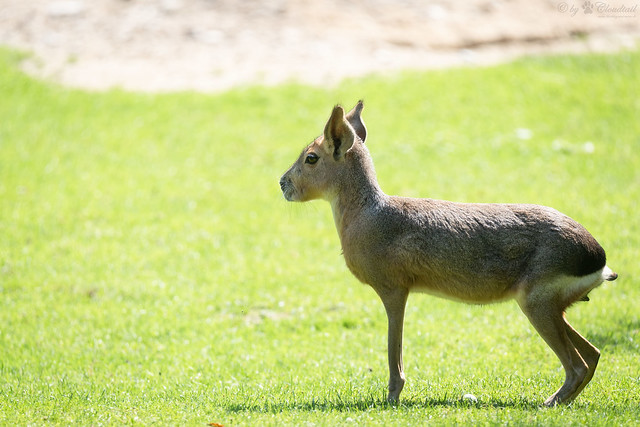Hello,
We have another five amazing animals for you today. Enjoy!
11. Dhole
This is a dog species which looks rather like a red fox. They are difficult to put
into any of the dog subfamilies. They aren't foxes, nor wolves, nor domestic
dogs.
Dholes are fast runners and live in packs of 5-12 individuals. Although
sometimes, different packs will join forces to become a pack of 30 or more
individuals! However, these super packs are broken up after a successful hunt.
The different packs rarely attack each other as neighbouring packs are often
closely related. Dhole packs live in burrows with multiple entrances. They can
be found in eastern and southern Asia. They eat wild berries, insects and
lizards and as a pack hunt deer, rodents and other wild mammals.
Interestingly, unlike other dogs, they rarely kill by biting at the throat.
They are also good swimmers!
12. Irrawaddy dolphin
The Irrawaddy dolphin can be found in coastal areas of south and southeast
Asia as well as three rivers. They are the Ayeyarwady, the Mahakam and the
Mekong. They can live in both salt and freshwater habitats. They feed on fish,
cephalopods, and crustaceans and often hunt in groups. They apparently
sometimes spit water when they're eating, which may be used to herd fish (I'm
not sure how!). They can weigh up to 181kg! They are relatively slow swimmers
but have been reported to swim up to 16mph when startled. Only 92 of these
animals are estimated to exist according to WWF, this is a result of being
caught accidentally in fishing nets and are categorised as endangered.
However, some websites disagree and one says there are 6000! So I don't really
know what to believe but I think WWF is probably more reliable!
WWF
explains really well how important they are for the local ecosystems and
communities:
"The protection of the Irrawaddy dolphin is crucial for the overall health
of the Mekong River—home to an estimated 1,100 species of fish. The
Irrawaddy dolphin is also regarded as a sacred animal by both Khmer and Lao
people, and is an important source of income and jobs for communities
involved in dolphin-watching ecotourism."
13. Patagonian Mara
The Patagonian Mara is a rather bizarre rodent of the 'cavy' family. They are
herbivores and eat mainly grasses and some seeds and flowers. They are also
'coprophagous' meaning they ingest their own dung to maximize nutrient
absorption. Physically, they are very similar to rabbits and hares for their
long ears, hopping motion and facial features. They are only found in
Argentina and are considered near-threatened. This is a result of hunting (for
their skin) and habitat loss/changes. They are considered a rather unusual pet
too.
14. Amazonian royal flycatcher
They live in the Amazon basin (hence the name) and eat mainly flying insects.
They are tiny, growing to only around 15 cm! Both males and females have the
crest, but it is paler in females and they (but I believe especially males)
only erect it when scared or trying to attract a mate. You may have guessed
that this species is under threat too, but I believe it is classed as least
concern on the IUCN list, though it is noted on a few websites that as it is an animal of
the Amazon Rainforest, it is under threat from habitat loss and deforestation.
You can read more about it's environment of the Amazon in our Amazon
Rainforest series linked here! I think they are beautiful creatures!
15. Zebra Duiker
The Zebra Duiker eats leaves, fruits and shoots high in the canopy but has
been known to eat rodents occasionally. They live in the river valleys and
forests of mostly Liberia but also the Ivory coast of Sierra Leone. They are a
small type of antelope and have 12-16 distinctive zebra style stripes. They
are about 81-88cm long and weigh around 16kg. They are largely nocturnal. They
are vulnerable as they have been victims of deforestation, loss of habitat and
over-hunting. According to Wikipedia, their population numbers are at about
28,000 though this is expected to be high and their numbers are in
decline.
We hope you enjoyed this week's five animals. We'll be back next week for
another five. If you want to suggest an animal you can use the comments or
email us at contact.greenworldblog@gmail.com
Sources:
https://www.nationalgeographic.com/animals/mammals/facts/dholes
https://www.worldwildlife.org/species/irrawaddy-dolphin
https://animalia.bio/patagonian-mara
https://animalia.bio/amazonian-royal-flycatcher
https://animalia.bio/zebra-duiker
https://www.nationalgeographic.com/animals/mammals/facts/dholes
https://www.worldwildlife.org/species/irrawaddy-dolphin
https://animalia.bio/patagonian-mara
https://animalia.bio/amazonian-royal-flycatcher
https://animalia.bio/zebra-duiker
Images:
Irrawaddy dolphin:
This image, owned by
Prachatai
(on flickr.com) is licensed under CC BY-NC-ND 2.0.
Patagonian Mara:
This image, owned by
Cloudtail the Snow Leopard
(on flickr.com) is licensed under CC BY-NC-ND 2.0




Comments
Post a Comment